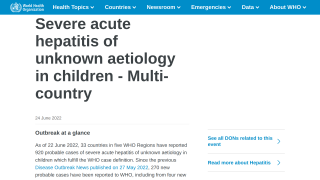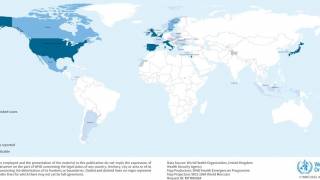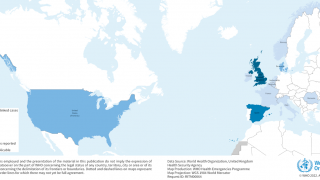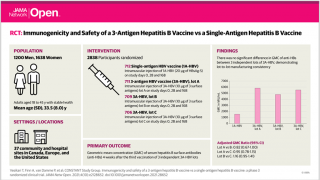Hepatitis A Cases Increased Nearly 500% in Outbreak Areas

A new report found 9 states and Washington, DC, reported an increase of hepatitis A cases of approximately 500 percent.
Overall, the number of hepatitis A cases in the USA reported to the Centers for Disease Control and Prevention (CDC) increased by 294 percent during 2016–2018, when compared with the two previous years.
Moreover, updated data in 2019 indicates the hepatitis A outbreak will continue across the USA.
As an example, the State of Florida reported 90 new hepatitis A cases for 1 week in April.
As of April 30, 2019, the 4 states which have reported the most HAV cases and related deaths during the 2017-2019 outbreak in the USA include:
- Kentucky: 4,543 cases, and 53 deaths
- West Virginia: 2,503 cases, and 21 deaths
- Ohio: 2,178 cases, and 7 deaths
- Indiana: 1,294 cases, and 4 deaths
In the past, outbreaks of hepatitis A virus (HAV) infections occurred every 10–15 years and were associated with asymptomatic children, says the CDC.
With the widespread adoption of universal childhood vaccination recommendations, asymptomatic children are no longer the main drivers of hepatitis A outbreaks.
Although the overall incidence rate of HAV infections has decreased within all age groups, a large population of susceptible, unvaccinated adults who were not infected by being exposed to the virus during childhood, remain vulnerable to infection by contaminated foods and infectious food staff.
During 2018, over 25 restaurant chains reported staff had worked while infectious with the HAV.
Additionally, the CDC included the ‘homeless’ population, along with drug uses, as HAV susceptible populations.
Increasingly, molecular epidemiology is employed by public health laboratories to better characterize HAV transmission patterns. Historically, genotype IA has been the most common genotype circulating in North America.
But, during 2013–2018, HAV genotype IB predominated in the United States.
And, increasing numbers of genotype IIIA were seen, a genotype that is considered rare in the United States.
Decreasing new infections from hepatitis A virus can be achieved and sustained by maintaining a high level of population immunity through vaccination, says the CDC.
There is no universal vaccination recommendation for adults in the United States.
However. the CDC says to get vaccinated if you are at risk of contracting the virus.
There are 3 vaccines available in the USA, Vaqta, Havrix, and Twinrix. These HAV preventive vaccines are available at pharmacies in most states.
And discounts may be found at Vaccine Discounts.
Additionally, immune globulin can provide short-term protection against hepatitis A, both pre- and post-exposure.
Immune globulin must be administered within 2 weeks after exposure for maximum protection.
Relevant Links: CDC vaccination schedules, CDC price list, how to report vaccine side effects, and international travel alerts.
Our Trust Standards: Medical Advisory Committee


























